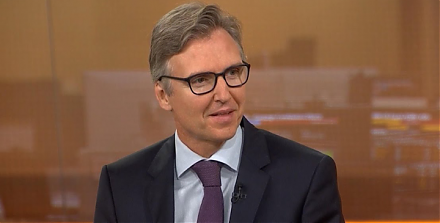

2020-07-26 15:29:00 Sun ET
lean startup team work streams value creation service innovations team leaders specialists advisors iterative continuous improvements senior managers core business operations core business operations seamless systems disruptive innovation blue ocean product-market fit seamless integration lean solutions minimum viable products lean production lean consumption continuous flow jobs-to-be-done
Firms and customers create value and wealth together by joining the continual flow of small batches of lean production to the lean consumption of cost-effective minimum viable products.
James Womack and Daniel Jones (2005)
Lean solutions: companies and customers can create value and wealth together
In the modern era most consumers have greater choices of high-quality goods and services from many different sources. These alternative goods and services often arise from different upstream suppliers, intermediate competitors, and blue-ocean entrants. However, many setbacks and obstacles that surround the major process of applying these products and services to accomplish specific tasks and jobs often cause frustration and disappointment. The continuous flow of small batches of lean production focuses on substantive waste minimization and profit maximization with both iterative continuous improvements and collaborative team efforts. On the flip side, lean consumption depends on the seamless integration of both lean minimum viable products and the product-market fit for more efficient task completion in due course. In the fundamental essence of lean consumption, customer tastes, habits, lifestyles, and preferences must fit well with the collaborative team efforts and core business operations of lean product and service providers. This collective wisdom contributes to the ultimate job completion in time.
In the new age of lean consumption, the signature customer preferences entail the eventual minimization of total costs (especially time costs) of rising up to the fresh challenges, necessities, problems, and obstacles etc. This lean consumption helps enrich the socioeconomic lives of most customers. Both consumers and producers must share core interests and business processes in light of the broader vision of mutual recognition and collaboration in major problem resolution. In summary, lean solutions bridge the business gap between the continuous flow of small batches of lean production and the seamless integration of both minimum viable products and the product-market fit for better job completion in time. When push comes to shove, the law of inadvertent consequences counsels caution.
Smart companies often strive to connect the continuous flow of small batches of lean production with both iterative product feature enhancements and collaborative team efforts to the seamless integration of both lean minimum viable products and the product-market fit for more efficient task completion in time.
Nowadays, few companies understand consumption as a key business process or a series of interwoven goods and services, all of which must occur seamlessly for lean product and service providers to ensure customer satisfaction. From a unique fundamental viewpoint, lean consumption continues as a relentless set of actions that most customers undertake to solve specific problems over time. For instance, computer users need the Microsoft Office software suite to carry out a specific set of interwoven tasks with Word documents, Excel spreadsheets, PowerPoint slides, Outlook emails, and so forth. In fact, the lean production business processes claim more of customer time and energy and so often tend to blur the boundary between current consumption and product or service provision. In this important way, many customers contribute to both the design and development of high-quality goods or services over time. In the new age of the Internet and information technology with the key introduction of more personal capital goods (such as computers, scanners, printers, ebook readers, smart phones, and apps etc), many lean consumers want to solve specific problems in a complete, thorough, and cost-effective manner with minimum expenditures of both time and effort.
At the same time, many consumers strive to bundle multiple problems and so want to reduce the total number of problems for better ultimate resolution. With a smaller bundle of specific problems, most consumers can perform multiple tasks in one go. For example, iPhone users often check and send emails, find new restaurants via Google maps, ask Siri smart questions, open web pages in Safari and Chrome etc, and save, edit, and organize notes, files, photos, and text messages with a pair of dexterous fingers. In this positive light, lean companies must learn to provide high-quality goods and services to the right consumers at the right time in the right place. In a nutshell, lean solutions focus on not only the functional features of most goods and services, but also perhaps more importantly the social and emotional elements of both consumer needs and wants.
Lean CEOs and disruptive innovators can often apply their core competencies and distinctive capabilities to offer lean solutions that empower most consumers to hire high-quality goods and services to fulfill specific tasks, jobs, or techniques etc in a complete, thorough, and cost-effective manner. Such lean solutions can help most consumers solve their specific problems with minimum expenditures of both time and effort. In this fundamental way, both lean CEOs and disruptive innovators must design lean solutions in accordance with the total costs and total user experiences (such as both less time and less hassle for most lean consumers).
Both lean CEOs and disruptive innovators must learn to see lean consumption and provision through the lens of both time costs and trade-offs.
Lean consumers often need to evaluate their time costs and trade-offs in terms of 4 primary categories: personal time, paid work, leisure, and unpaid work. The main contest for consumer time entails the mysterious and inexorable trade-off between leisure and unpaid work. Unpaid work includes the bothersome tasks and jobs that most consumers prefer not to perform due to a lack of compensation. However, it is essential for these consumers to complete their unpaid work in order to conduct their daily lives with fewer problems, issues, setbacks, obstacles, and barriers etc. In many OECD countries, a lot of unpaid work continues to increase at the expense of leisure time for numerous lean consumers. Good examples of lean consumption include medical visits, shopping trips, car repairs, home improvements, and so on. In order to reduce time costs, lean consumers often need to trade off their valuable leisure time with unpaid work.
From time to time, lean consumption means better time management and personal task organization. It is necessary for most product and service providers to see the complete value stream, i.e. the lean consumption stream plus the provision stream. This strategic foresight empowers senior business leaders and middle managers to remove waste and frustration in the joint business process of user experiences with both iterative continuous feature enhancements and collaborative team efforts. In essence, senior business leaders and disruptive innovators often need to design lean solutions to transform the main pain points of consumer discontent, discomfort, and frustration into the gain points of both customer satisfaction and delight.
Lean thinkers probe into the complete value stream from the mutual viewpoints of both consumers and providers in order to envision what could be better functional features and user experiences. Sometimes it is essential for lean business leaders to pay attention to the social needs and emotional elements of most consumption. Lean solutions resemble the specific root causes of jobs-to-be-done first found by Clayton Christensen. The prescient theory of jobs-to-be-done can help connect the continuous flow of small batches of lean production to the seamless integration of both lean minimum viable products and the product-market fit for better consumer task completion over time.
Christensen developed this theory of jobs-to-be-done when he tried to help a major fast-food chain increase its milk shake sales. Most of the target customers looked for simple, convenient, and cost-effective milk shakes that would satisfy their thirst and hunger until lunch. Moreover, these milk shakes would be easy to consume in the car, would last for a few hours, and would leave hands dry and clean. Afternoon customers bought milk shakes for different jobs. For instance, many parents might buy milk shakes as liquid treats and snacks for their kids instead of buying toys for these kids. The Christensen theory of jobs-to-be-done offers fresh perspectives to help disruptive innovators understand the root causes of most customer behaviors. This landmark theory helps explain what motivates core customers to buy-and-hire products and services, not only over obvious alternative competitors, but also over different product and service categories. By understanding this causal mechanism, both lean business leaders and disruptive innovators can predict the likely rise and emergence of future successful products and services. In practice, senior business leaders should cater to these new customer needs and demands in advance.
Instead of measuring lean production results in terms of efficiency in rectifying the same product failures over and over, lean thinkers focus on eliminating the product failures altogether. In this important way, lean business organizations can reduce the total human effort, time, and energy that most call centers require to solve each customer problem. For this reason, it is essential for lean thinkers to build a robust communication pipeline between the senior business leaders and more productive team members on the floor. The direct communication can empower lean business leaders to listen to the frontline team members (and often their grumpy customers). As a result, senior business leaders and decision-makers can better concoct lean solutions and remedies etc to completely resolve the root causes of both consumer problems and product failures.
The lean consumption approach often requires fewer employees overall (but more knowledge workers) to solve a lower number of customer problems in a better way. Rather than paying lower wages for remote workers who perform mass production jobs in response to the same consumer complaints, lean business thinkers ponder whether it is absolutely essential for low-skill workers to carry out these jobs at all. From time to time, lean solutions help eliminate most consumer problems and key product failures altogether once senior business leaders and decision-makers hire subject matter experts and specialists etc to diagnose lean solutions that eradicate fundamental flaws in a thorough and cost-effective manner. In this positive light, it is crucial for lean business leaders to devise permanent solutions and so turn their attention from low-skill call centers and quick fixes to high-skill knowledge workers. In a nutshell, this lean approach can often solve 80% of both consumer problems and product failures with only 20% of creative knowledge workers.
Smart business organizations must offer lean solutions as longer-term remediable action plans for most consumer complaints, problems, and product failures.
It is essential for smart business organizations to provide lean solutions to the right customers at the right time in the right place. At least 2 central questions arise from this business context: Can the provider reduce the amount of work by asking most customers to wait? Would there be a long line if the provider had to pay customers to wait? These central questions pose the main trade-off that lean business leaders need to evaluate in the continuous flow of small batches of lean production. At the same time, these questions reflect pervasive consumer complaints in the seamless integration of both lean minimum viable products and the product-market fit. Lean solutions help address these concerns, questions, and trade-offs.
High-skill knowledge workers often need to interact with most customers to better understand the root causes of both consumer complaints and product failures etc. This root analysis helps formulate actionable business insights. In essence, these insights can empower senior managers and decision-makers devise lean solutions to most product failures with iterative continuous improvements and collaborative team efforts. Sometimes lean business leaders, their direct reports, and most other team members take time to learn the specific tools, parts, or components that most customers require to fix their unique problems. Lean business organizations often need to adjust their operational procedures and practices to better align with most customer demands and interests. Lean solutions should save unpaid time for most consumers as lean business providers use their paid time to ensure both customer satisfaction and delight.
Lean consumption can become problematic at all levels of the core value stream. Most product and service organizations include wholesalers, manufacturers, their upstream suppliers, retailers, and repair technicians etc. All of these stakeholders serve as shoppers for items from the next organization up the core value stream. At each level of this mid-stream distribution network ecosystem, large inventories may inadvertently become bottlenecks in the whole supply chain.
Lean business leaders can often solve this problem by reversing traditional logic. It is important for lean product and service providers to schedule only one point in the core value stream. This lean solution substantially increases the frequency of replenishment at each point. At the same time, this lean solution helps compress the lean provision stream to bring both manufacturers and distributors closer to the ultimate point of sale. In this unique fashion, lean business thinkers substitute most customer needs for the upstream assets and intermediate capital goods by means of a reflexive (but not cognitive) information management system. Information has to flow only to the next upstream step, and that step only needs to re-supply what most ultimate and intermediate consumers require at the downstream step. Lean logistics often allow frequent replenishment of both intermediate capital goods and inventories. The resultant compression of both major value and provision streams leads to efficiency gains in terms of both less total time and distance.
Most traditional product and service providers fixate on customer characteristics. Instead, lean providers focus on customer circumstances. From time to time, it is quite difficult for most consumers to effectively trade off time, cost, and variety. For this reason, if consumers were able to choose where they would go to buy clothes, groceries, personal care items, medications, and so forth at the best prices, these consumers would probably think of some big box retailers such as Amazon, Costco, Kroger, Target, and Walmart etc due to cost-effective scale economies. Consumer characteristics cannot change over the years; yet, most consumer circumstances can often result in different lean consumption patterns at different times in different formats. One of the fundamental tenets of lean consumption is that one size cannot fit all consumers (not even most consumers) all the time.
Lean providers need to rethink the fundamental definition of value creation.
Most consumer problems recur on an ongoing basis. Even if the best product and service providers apply lean solutions to these problems, consumers can continue to face a wide variety of new problems. For this reason, lean business leaders can take time to rethink the fundamental definition of value creation. Such lean product and service providers can work together with most consumers to solve their basic problems in new ways. Also, lean providers can combine many goods and services into a few bundles to reduce time, hassle, and cost for all parties. The recent great convergence of technological advances makes it progressively possible to change the fundamental unit of lean consumption.
In the new age of lean consumption, the signature customer preferences entail the eventual minimization of total costs (especially time costs) of rising up to the fresh challenges, necessities, problems, and obstacles etc. This lean consumption helps enrich the socioeconomic lives of most customers. Both consumers and producers must share core interests and business processes in light of the broader vision of mutual recognition and collaboration in major problem resolution. In summary, lean solutions bridge the business gap between the continuous flow of small batches of lean production and the seamless integration of both minimum viable products and the product-market fit for better job completion in time. When push comes to shove, the law of inadvertent consequences counsels caution.
This analytic essay cannot constitute any form of financial advice, analyst opinion, recommendation, or endorsement. We refrain from engaging in financial advisory services, and we seek to offer our analytic insights into the latest economic trends, stock market topics, investment memes, personal finance tools, and other self-help inspirations. Our proprietary alpha investment algorithmic system helps enrich our AYA fintech network platform as a new social community for stock market investors: https://ayafintech.network.
We share and circulate these informative posts and essays with hyperlinks through our blogs, podcasts, emails, social media channels, and patent specifications. Our goal is to help promote better financial literacy, inclusion, and freedom of the global general public. While we make a conscious effort to optimize our global reach, this optimization retains our current focus on the American stock market.
This free ebook, AYA Analytica, shares new economic insights, investment memes, and stock portfolio strategies through both blog posts and patent specifications on our AYA fintech network platform. AYA fintech network platform is every investor's social toolkit for profitable investment management. We can help empower stock market investors through technology, education, and social integration.
We hope you enjoy the substantive content of this essay! AYA!
Andy Yeh
Chief Financial Architect (CFA) and Financial Risk Manager (FRM)
Brass Ring International Density Enterprise (BRIDE) © 2013-2023
Do you find it difficult to beat the long-term average 11% stock market return?
It took us 20+ years to design a new profitable algorithmic asset investment model and its attendant proprietary software technology with fintech patent protection in 2+ years. AYA fintech network platform serves as everyone's first aid for his or her personal stock investment portfolio. Our proprietary software technology allows each investor to leverage fintech intelligence and information without exorbitant time commitment. Our dynamic conditional alpha analysis boosts the typical win rate from 70% to 90%+.
Our new alpha model empowers members to be a wiser stock market investor with profitable alpha signals! The proprietary quantitative analysis applies the collective wisdom of Warren Buffett, George Soros, Carl Icahn, Mark Cuban, Tony Robbins, and Nobel Laureates in finance such as Robert Engle, Eugene Fama, Lars Hansen, Robert Lucas, Robert Merton, Edward Prescott, Thomas Sargent, William Sharpe, Robert Shiller, and Christopher Sims.
Follow AYA Analytica financial health memo (FHM) podcast channel on YouTube: https://www.youtube.com/channel/UCvntmnacYyCmVyQ-c_qjyyQ
Follow our Brass Ring Facebook to learn more about the latest financial news and fantastic stock investment ideas: http://www.facebook.com/brassring2013.
Free signup for stock signals: https://ayafintech.network
Mission on profitable signals: https://ayafintech.network/mission.php
Model technical descriptions: https://ayafintech.network/model.php
Blog on stock alpha signals: https://ayafintech.network/blog.php
Freemium base pricing plans: https://ayafintech.network/freemium.php
Signup for periodic updates: https://ayafintech.network/signup.php
Login for freemium benefits: https://ayafintech.network/login.php
If any of our AYA Analytica financial health memos (FHM), blog posts, ebooks, newsletters, and notifications etc, or any other form of online content curation, involves potential copyright concerns, please feel free to contact us at service@ayafintech.network so that we can remove relevant content in response to any such request within a reasonable time frame.
2019-07-11 10:48:00 Thursday ET

France and Germany are the biggest beneficiaries of Sino-U.S. trade escalation, whereas, Japan, South Korea, and Taiwan suffer from the current trade stando
2018-07-30 11:36:00 Monday ET

Trumpism may now become the new populist world order of economic governance. Populist support contributes to Trump's 2016 presidential election victory
2018-08-03 07:33:00 Friday ET

President Trump escalates the current Sino-American trade war by imposing 25% tariffs on $200 billion Chinese imports. These tariffs encompass chemical prod
2020-11-17 08:27:00 Tuesday ET

Management consultants can build sustainable trust-driven client relations through the accelerant curve of business value creation. Alan Weiss (2016)
2018-07-25 11:41:00 Wednesday ET

President Trump hails and touts America's new high real GDP economic growth in 2018Q2. The U.S. is now a $20+ trillion economy, and America hits this mi
2024-04-02 04:45:41 Tuesday ET

Stock Synopsis: High-speed 5G broadband and mobile cloud telecommunication In the U.S. telecom industry for high-speed Internet connections and mobile cl